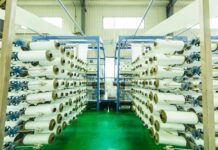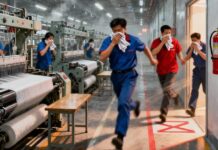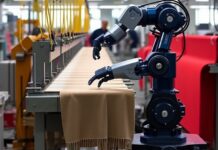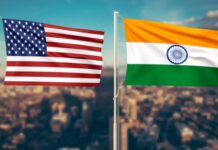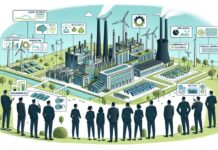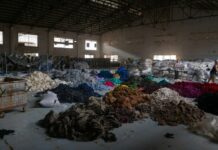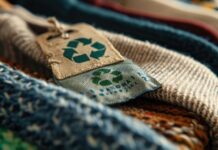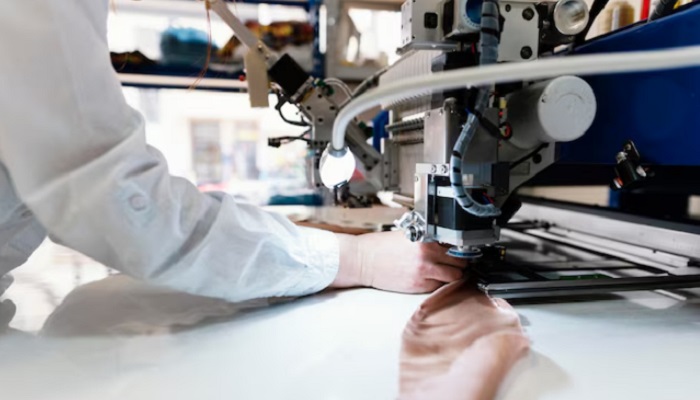One of the oldest and most significant businesses in the global economy, the textile industry is characterized by operations that require a significant amount of labor and have significant repercussions for the environment. Nevertheless, the arrival of artificial intelligence is generating a paradigm shift. Artificial intelligence (AI) technologies such as machine learning, computer vision, and predictive analytics are being used to speed up operations, reduce waste, and bring about an overall improvement in the quality of textile products.
Processes of production that are optimized
- Automation and Robotics: Automation that is driven by artificial intelligence is taking the lead in transforming the textile manufacturing industry. Cutting, stitching, and dying are all examples of labor-intensive and repetitive tasks that may be performed by automated systems and robots with the assistance of artificial intelligence algorithms. These gadgets, which are driven by artificial intelligence, function with extraordinary precision and speed, reducing the amount of time spent on production and reducing the amount of human mistakes.
- Predictive Maintenance: One of the most important challenges in the textile manufacturing industry is the maintenance difficulties that cause machines to be down for extended periods of time. In order to predict potential equipment issues, artificial intelligence may analyze data obtained from sensors that are placed in the gear. This approach to predictive maintenance ensures that equipment is maintained at the appropriate times, therefore lowering the number of unanticipated failures and increasing the amount of work that is completed.
- Supply Chain Optimization: Artificial intelligence is also contributing to the optimization of supply chain management. Through the use of predictive analytics, artificial intelligence is able to make demand projections, manage inventory, and streamline logistics. This results in a supply chain that is more adaptable and nimble, allowing it to respond to changes in the market while simultaneously reducing the amount of excess inventory and the costs associated with it.
- Increased energy efficiency: The manufacture of textiles requires a significant amount of energy, and artificial intelligence may assist in reducing energy use. AI algorithms analyze patterns of energy use and look for methods to reduce energy consumption. Using artificial intelligence, for instance, it is possible to optimize heating and cooling systems, lighting, and equipment working schedules in order to eliminate energy waste, which ultimately results in cost savings and a reduced energy impact.
Improving the Quality Control System
- Computer Vision for Defect Detection: Computer vision systems that are driven by artificial intelligence are revolutionizing quality control in the textile manufacturing industry. The detection of fabric issues with an unparalleled level of accuracy is made possible by these technologies, which make use of sophisticated imaging techniques and machine learning algorithms. In contrast to conventional methods, which are dependent on human inspectors, artificial intelligence systems are able to identify even the most insignificant defects, such as weaving mistakes, stains, or changes in color, so ensuring that only high-quality products are brought to market.
- Consistency and Standardization: It is essential to maintain uniformity and standardization in textile products in order to ensure the satisfaction of consumers and the reputation of the brand. Artificial intelligence ensures that every product satisfies the needed quality standards by continuously monitoring the production process and making adjustments in real time. It is particularly important to keep this in mind while performing dyeing and finishing techniques, which need precise control over the color and texture of the material.
- Real-Time Monitoring and Feedback: Artificial intelligence technologies provide real-time monitoring and feedback throughout the whole manufacturing process. Data is collected by sensors and cameras that are deployed at different stages of the production process. This data is then analyzed by artificial intelligence algorithms in order to identify deviations from the parameters that were predicted. This rapid input makes it possible to take corrective actions in a timely manner, preventing errors from propagating throughout the manufacturing process.
- Enhancement of Data Analytics: Artificial intelligence makes use of large data analytics in order to get insights into quality management. Artificial intelligence is able to recognize patterns and trends in historical data that lead to inconsistencies or defects. These statistics are essential for projects that aim to achieve continuous improvement because they enable businesses to enhance the quality of their products over time and fine-tune their operations.
Research and Illustrations of Cases
Several of the most important textile manufacturers are already beginning to reap the advantages of using AI. In order to degrade jeans, for instance, Levi Strauss & Co. has used laser technology that is powered by artificial intelligence. This not only improves precision but also helps conserve water and chemicals. In a similar manner, Adidas’s Speedfactory employs robots driven by artificial intelligence to manufacture personalized shoes with an unprecedented level of efficiency and uniformity.
The Obstacles and Prospects for the Future
AI offers a tremendous amount of promise for the textile industry; nevertheless, there are challenges associated with putting it into practice. Manufacturers face a variety of problems, some of which include high initial investment costs, the demand for qualified people, and concerns over the privacy and security of data. On the other hand, it is anticipated that these obstacles will decrease as technological advancements continue to make them more accessible. AI has a promising future in the textile manufacturing industry. Smart textiles that are driven by artificial intelligence and have the ability to alter their color or texture in response to environmental stimuli are one example of a forthcoming invention. In addition, the integration of artificial intelligence with other cutting-edge technologies, such as the Internet of Things (IoT) and blockchain, will enhance the transparency, traceability, and sustainability of the whole textile supply chain.
Final Thoughts
Artificial intelligence is unquestionably causing a revolution in the textile sector by simplifying manufacturing procedures and enhancing quality control. The use of artificial intelligence is resulting in significant improvements in operational efficiency. These improvements include automation, predictive maintenance, supply chain optimization, and energy savings. In the realm of quality control, artificial intelligence’s skills in the areas of fault discovery, consistency, real-time monitoring, and data analytics guarantee that textile products are up to the highest standards. The future of artificial intelligence in the textile industry seems to be bright, with boundless prospects for innovation and progress, despite the challenges that have been encountered. It is anticipated that the textile industry would attain new heights in terms of efficiency, sustainability, and product quality if it adopts artificial intelligence (AI). This will eventually be to the advantage of producers, customers, and the environment.




